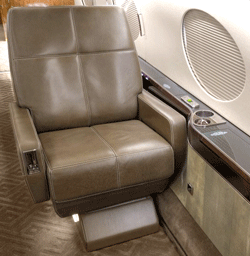Contributed by Cliff Barker, Flammability Engineer

In 1984 the FAA increased its flammability requirements beginning with the materials used for cabin seat cushions.
From 1981 - 1983, there were 277 transport category aircraft accidents in the United States. Of all the accidents that involved a post-crash fire, 34 were determined to be SURVIVABLE, yet nearly 600 passengers still suffered fatal injuries. In an effort to reduce the hazardous risks to passengers and crew aboard an aircraft during a SURVIVABLE accident, in 1984 the FAA began requiring certain materials used within the interior an aircraft to pass more stringent flammability requirements beginning with the materials used for seat cushions.
Today, all materials used in major repairs and alternation of an aircraft must past a series of FAA-approved flammability tests to be cleared for use. Although minor repairs/alterations do not require FAA approved test data, testing must still be provided to show that the proper testing was conducted for the material “As Installed” and that the results of these test are within their passing criteria
As a part Duncan Intelligence LIVE held May 23 in Battle Creek, MI, I will be leading an Inspector Authorization (IA) course on Flammability Testing that covers the FAA’s Flammability Regulations and how they are applied throughout the aircraft.
Duncan Intelligence LIVE
Duncan Intelligence LIVE is a free educational business aviation seminar, hosted by Duncan Aviation's Regional Managers. It is a face-to-face forum discussion with industry experts on hot industry topics as well as courses with Inspector Authorization (IA) renewal credit.
There is no cost for the event or meals and seating is limited. Come early the day before and enjoy an evening of golf and food. Click here to view all the course offerings and register for the event.
Cliff Barker is a Flammability Engineer at Duncan Aviation’sBattle Creek,MI, facility. He specializes in FAA Flammability Regulations. His aviation career began in 1978.


